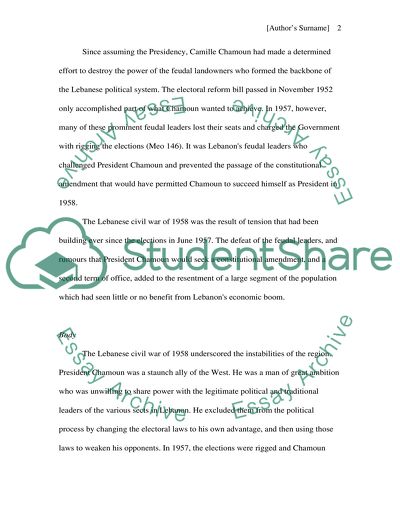Cite this document
(“The Lebanon Crises (1958) Term Paper Example | Topics and Well Written Essays - 2500 words”, n.d.)
The Lebanon Crises (1958) Term Paper Example | Topics and Well Written Essays - 2500 words. Retrieved from https://studentshare.org/history/1439359-the-lebanon-crises-1958
The Lebanon Crises (1958) Term Paper Example | Topics and Well Written Essays - 2500 words. Retrieved from https://studentshare.org/history/1439359-the-lebanon-crises-1958
(The Lebanon Crises (1958) Term Paper Example | Topics and Well Written Essays - 2500 Words)
The Lebanon Crises (1958) Term Paper Example | Topics and Well Written Essays - 2500 Words. https://studentshare.org/history/1439359-the-lebanon-crises-1958.
The Lebanon Crises (1958) Term Paper Example | Topics and Well Written Essays - 2500 Words. https://studentshare.org/history/1439359-the-lebanon-crises-1958.
“The Lebanon Crises (1958) Term Paper Example | Topics and Well Written Essays - 2500 Words”, n.d. https://studentshare.org/history/1439359-the-lebanon-crises-1958.


